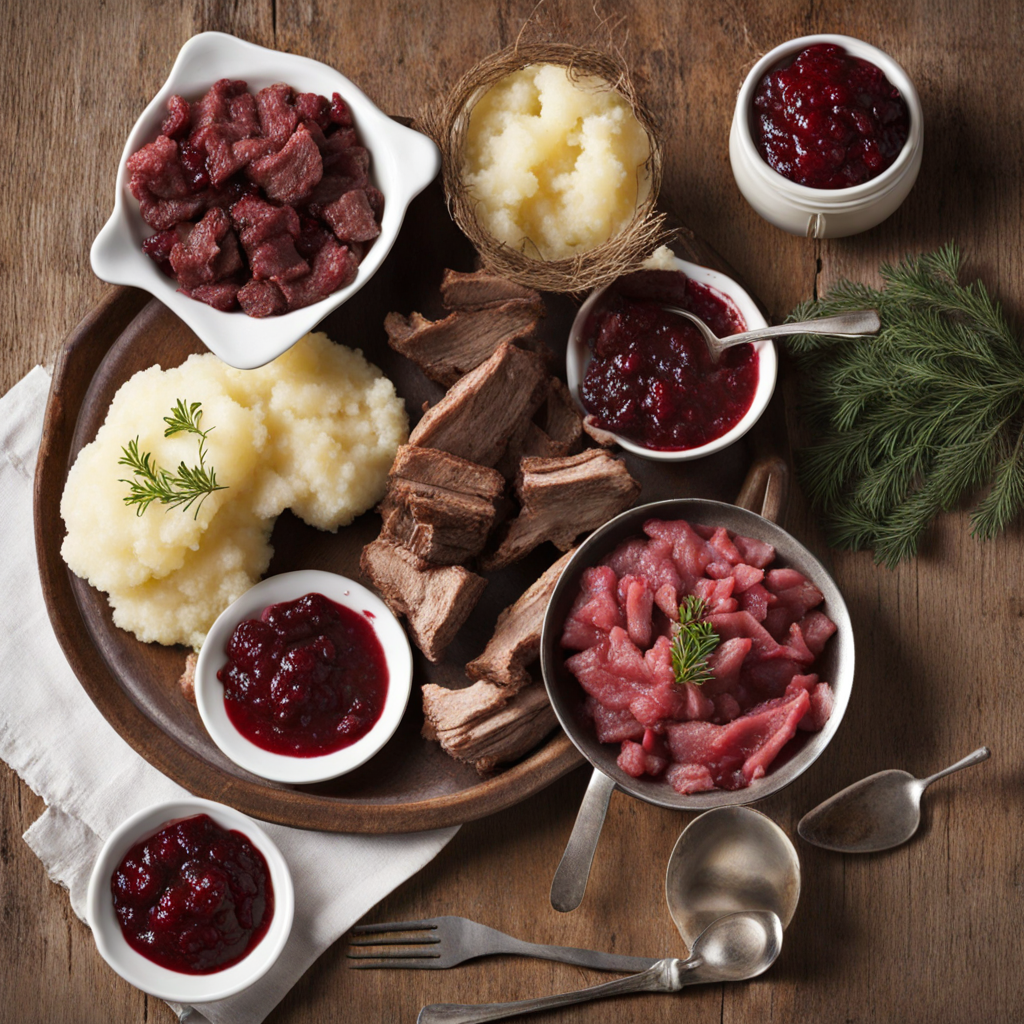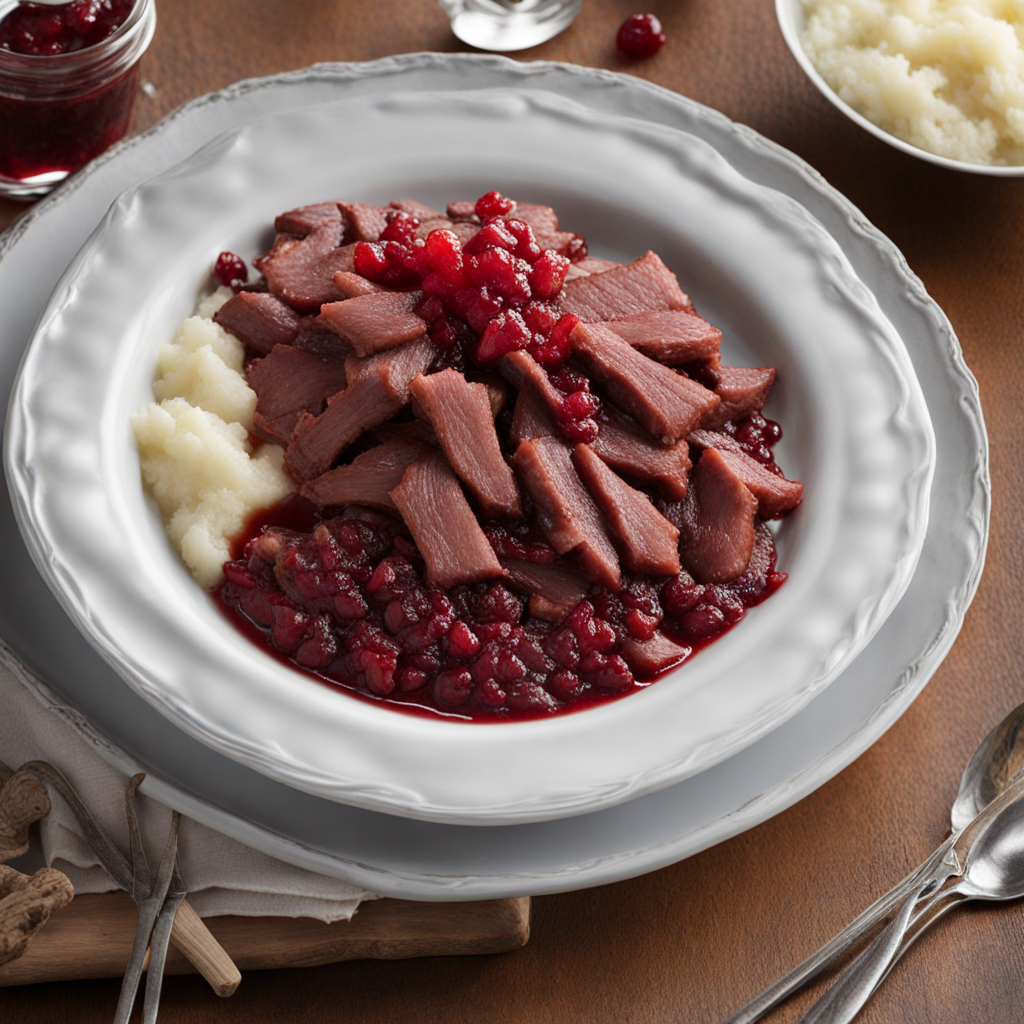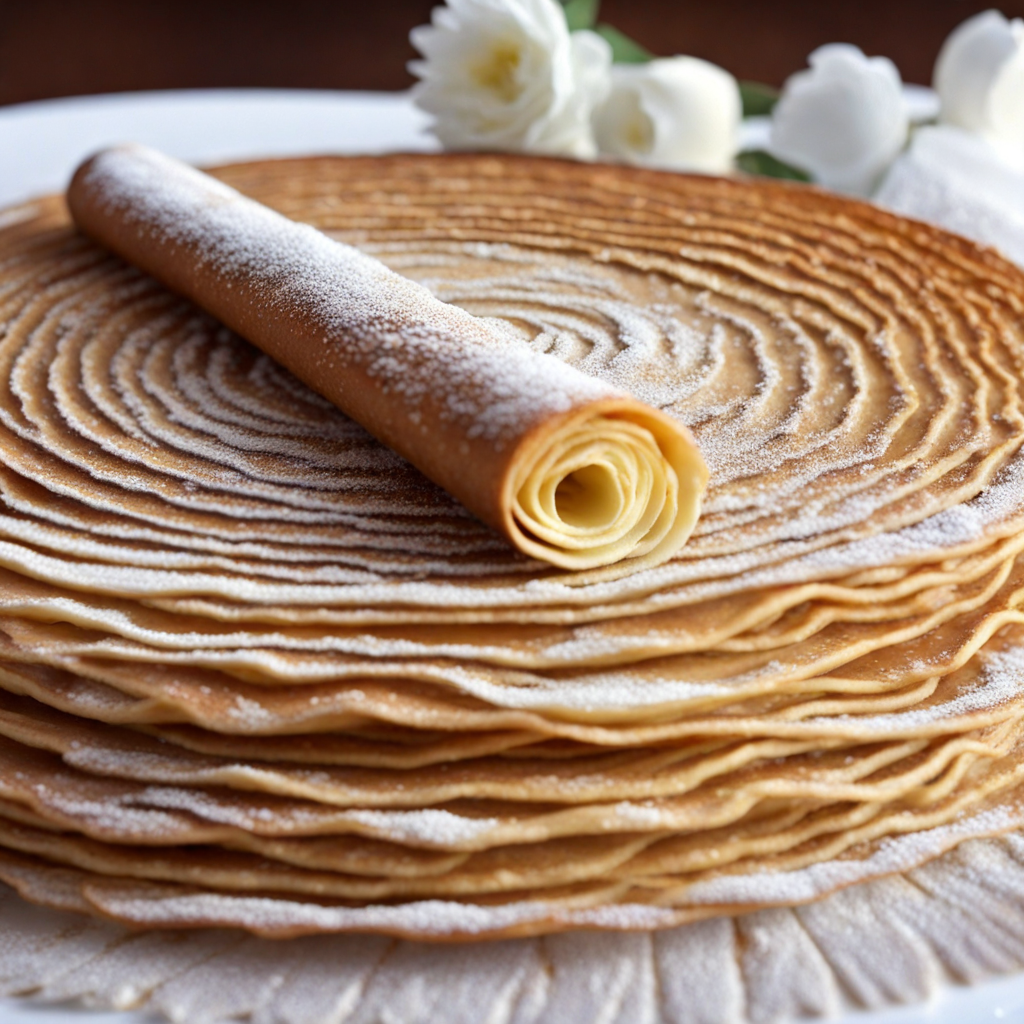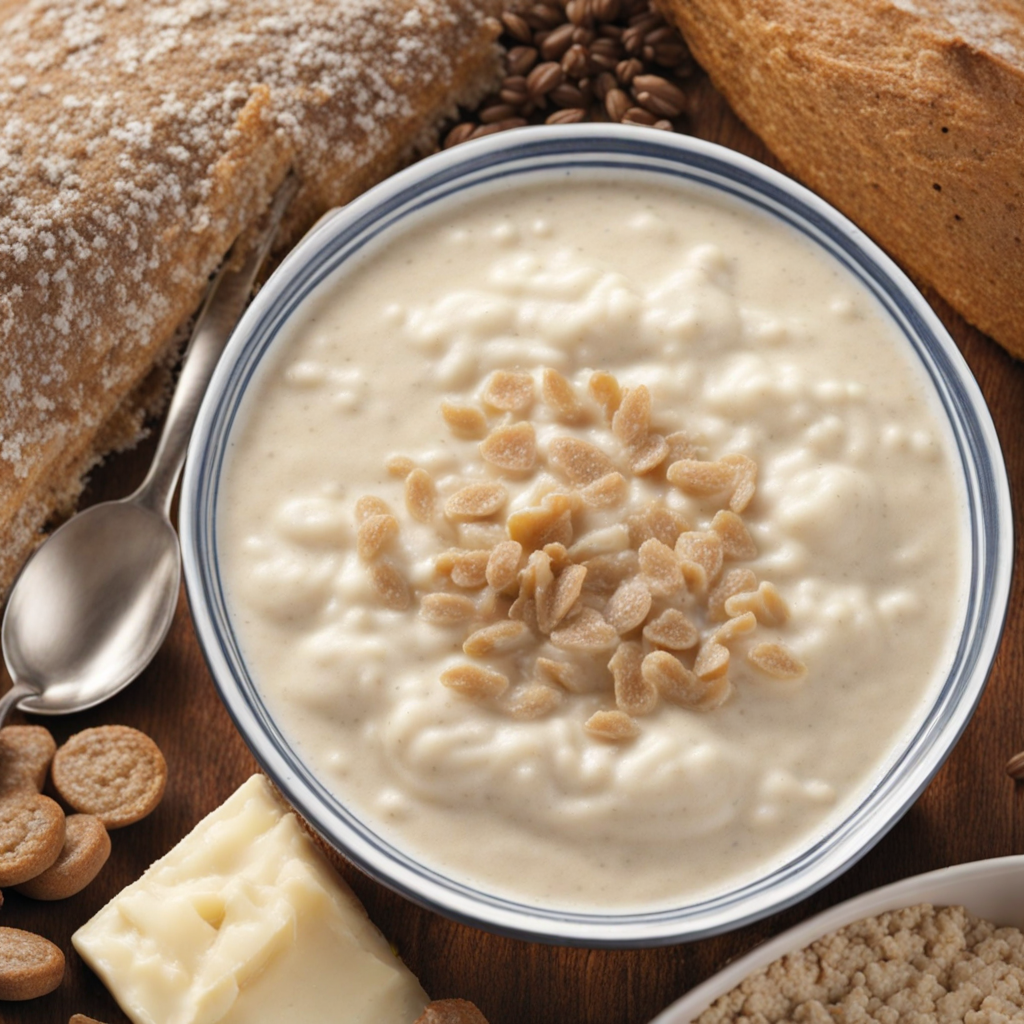Finnbiff
Finnbiff is a traditional Norwegian dish that captures the essence of the Nordic wilderness through its rich and hearty flavors. Made primarily from reindeer meat, this dish showcases the unique taste of game meat, which is tender, lean, and slightly sweet with earthy undertones. The meat is typically sliced into thin strips and cooked slowly, allowing it to absorb the flavors of the accompanying ingredients, such as onions, mushrooms, and a medley of aromatic herbs. The use of fresh, local produce enhances the dish, bringing a vibrant taste that reflects Norway's natural bounty. To elevate the flavor profile, Finnbiff is often enriched with a creamy sauce that combines sour cream or heavy cream with a touch of red wine or berry juices. This sauce not only adds a luscious texture but also balances the savory notes of the meat with a subtle acidity. The dish is traditionally served with sides that complement its robust character, such as mashed potatoes or flatbread, which soak up the delectable sauce and create a comforting, satisfying meal. Beyond its delicious taste, Finnbiff embodies the spirit of Norwegian cuisine, which emphasizes simplicity and the use of high-quality ingredients. It is often enjoyed during the colder months, making it a perfect dish for cozy gatherings or family dinners. As you explore the flavors of Finnbiff, you’ll experience a connection to Norway’s rich cultural heritage and its deep-rooted traditions of hunting and gathering, all encapsulated in this delightful dish.
How It Became This Dish
Finnbiff: A Culinary Journey Through Norway Origins and Cultural Significance Finnbiff, a traditional dish hailing from Norway, embodies the rich cultural tapestry of the country's indigenous Sámi people. This hearty stew is primarily made with reindeer meat, which is a staple in Sámi cuisine, reflecting the deep-rooted connection between the Sámi people and their natural environment. The origin of Finnbiff can be traced back centuries, deeply intertwined with the nomadic lifestyle of the Sámi, who herded reindeer across the expansive tundras of northern Scandinavia. Historically, reindeer herding was not just a means of sustenance; it was a way of life that dictated the rhythms of Sámi culture. The reindeer provided not only meat but also milk, hides, and transportation. In this context, Finnbiff emerged as a practical and nourishing dish, representing the resourcefulness of the Sámi in utilizing the resources available to them. The dish’s name derives from "Finn," a term historically used to refer to the Sámi people, and "biff," which means meat in Norwegian, suggesting its foundational element as a meat dish. Finnbiff is more than just a meal; it symbolizes the Sámi's relationship with the land. The use of reindeer meat is emblematic of a sustainable lifestyle that respects the natural cycles of the Arctic environment. This connection to nature is reflected in the cooking techniques as well. Traditionally, Finnbiff was prepared over an open fire, using simple ingredients that could be sourced from the surrounding wilderness. The dish often includes onions, cream, and a variety of herbs, enhancing the natural flavors of the meat. The Preparation of Finnbiff The preparation of Finnbiff has remained relatively consistent over the years, although modern adaptations have emerged. Traditionally, the reindeer meat is cut into thin strips, marinated, and then sautéed with onions before being simmered in a rich sauce made from cream and broth. Some variations incorporate root vegetables or mushrooms, further enriching the dish. The flavor profile is subtly enhanced with juniper berries, a nod to the wild ingredients that are often foraged in the region. The dish is typically served with a side of mashed potatoes or flatbread, allowing diners to savor the robust flavors of the stew. Finnbiff has a unique ability to evoke warmth and comfort, making it a favored choice during the long, cold winters in Norway, particularly in the northern regions where Sámi culture is most prevalent. Development Over Time As Norway entered the 20th century, the appreciation for traditional dishes like Finnbiff saw a resurgence, driven by a growing interest in regional and indigenous cuisines. The post-war era brought about a greater awareness of the importance of preserving cultural heritage, including culinary traditions. In the face of globalization and the encroachment of fast food, many Norwegians began to take pride in their local foods, seeking to reconnect with their roots. In the latter half of the 20th century, Finnbiff began to appear on restaurant menus across Norway, often marketed as a gourmet dish. Chefs started experimenting with the traditional recipe, incorporating modern cooking techniques and presentation styles while staying true to the essence of the dish. This evolution did not dilute its cultural significance; rather, it spotlighted the importance of Sámi heritage within the broader context of Norwegian cuisine. In the 21st century, Finnbiff has gained recognition beyond Norway’s borders, becoming a staple in Scandinavian restaurants and winter festivals celebrating Nordic foods. It is often featured as part of "Nordic cuisine," which emphasizes local ingredients, sustainability, and traditional practices. The popularity of Finnbiff is a testament to the enduring legacy of the Sámi and their contributions to Norway's culinary landscape. Modern Interpretations and Sustainability In contemporary Norwegian society, the appreciation for Finnbiff continues to flourish, particularly among those who prioritize sustainable eating. Reindeer meat is celebrated not only for its flavor but also for its ecological benefits. As a wild game, reindeer are raised in natural habitats, requiring fewer resources compared to conventionally farmed livestock. The rise of the farm-to-table movement and an emphasis on local sourcing have further propelled Finnbiff into the spotlight. Today, culinary enthusiasts and chefs are experimenting with Finnbiff, introducing innovative ingredients while respecting its traditional roots. Some variations incorporate game meats like elk or moose, while others explore vegetarian alternatives that capture the essence of the stew without the meat. The dish has also found its way into food festivals and culinary competitions, showcasing the versatility and adaptability of this beloved Norwegian staple. Moreover, Finnbiff is often enjoyed during cultural celebrations and family gatherings, reinforcing its role as a comfort food deeply rooted in tradition. Its preparation is often a communal activity, bringing families and friends together to share in the experience of cooking and enjoying a meal that carries with it a rich history and cultural significance. Conclusion Finnbiff is more than a mere dish; it is a cultural artifact that encapsulates the spirit of the Sámi people and their harmonious relationship with nature. From its humble beginnings as a sustenance dish for reindeer herders to its status as a celebrated component of Norwegian cuisine, Finnbiff has evolved while maintaining its authenticity and connection to the past. As it continues to adapt to modern culinary trends and sustainability practices, Finnbiff remains a poignant reminder of Norway's rich culinary heritage, bridging the gap between tradition and innovation. Whether enjoyed in a cozy cabin in the mountains or at a trendy restaurant in Oslo, Finnbiff invites all who partake in its warmth to savor not just a meal, but a story steeped in history and culture.
You may like
Discover local flavors from Norway







